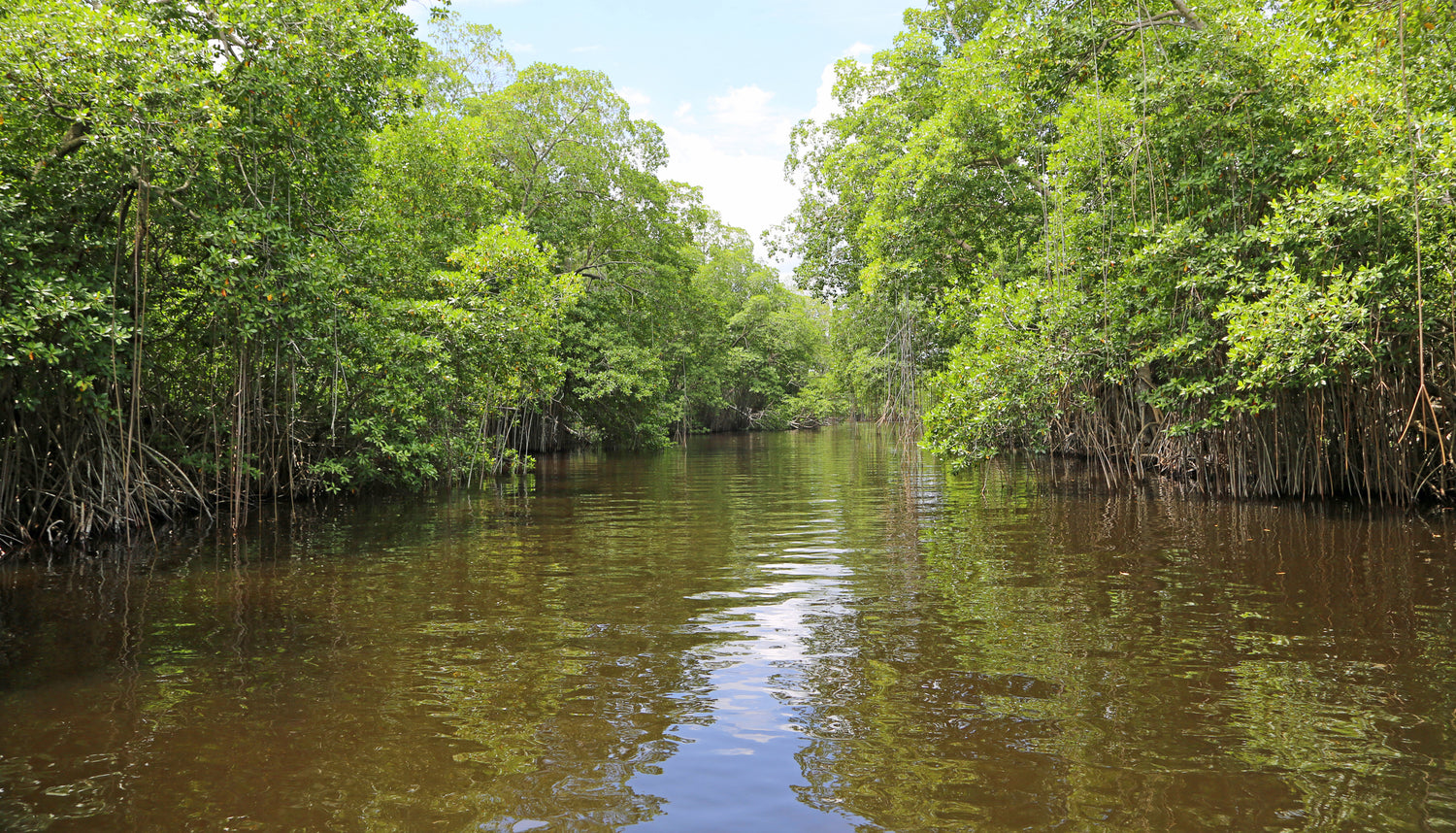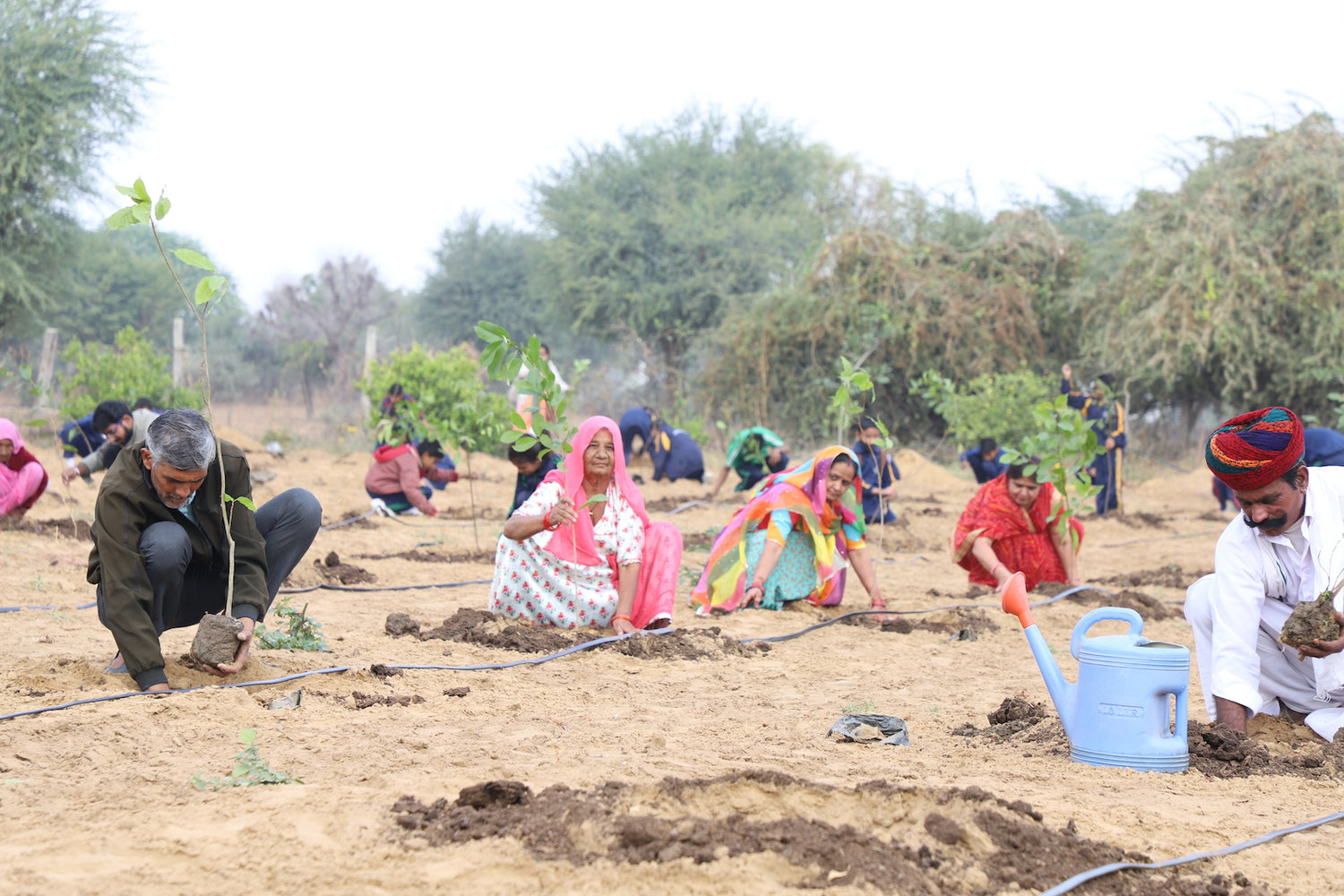Mangroves in Tamil Nadu: Pichavaram and Muthupet Coastal Treasures
Mangroves in Tamil Nadu, particularly in Pichavaram and Muthupet, are ecological gems. These coastal mangrove ecosystems, located along Tamil Nadu's e Read more
Connect with us
-
👥 Corporates
If you are looking for:
- 🌲 Tree Plantation Events
- 📊 CSR Projects
📧 corporate@growbilliontrees.com
📞 +91 9699723523
💬 +91 9325931304 WhatsApp (Only)
🕒 Mon - Sat | 10am - 7pm IST
-
🧩 Tree Plantation NGOs
If you are looking for:
- 💰 Financial Assistance
- 🤝 Operational Support
📧 support@growbilliontrees.com
📞 +91 9699723523
💬 +91 9325931304 WhatsApp (Only)
🕒 Mon - Sat | 10am - 7pm IST
-
🌼 Individuals
If you are looking for:
- 👥 Group Tree Plantation Drive
- 🌳 Bulk Tree Plantation
📞 +91 9699723523
💬 +91 9325931304 WhatsApp (Only)
🕒 Mon - Sat | 10am - 7pm IST
Trending
Trees for Corporates
Mangroves in Tamil Nadu: Pichavaram and Muthupet Coastal Treasures
Mangroves in Tamil Nadu, particularly in Pichavaram and Muthupet, are ecological gems.
These coastal mangrove ecosystems, located along Tamil Nadu's eastern coastline, play a vital role in preserving biodiversity, protecting against natural disasters, and supporting the livelihoods of local communities.
Known for their unique beauty and biodiversity, these mangroves are increasingly recognized for their importance in combating climate change and sustaining coastal ecosystems.
Tamil Nadu’s mangroves have been an integral part of its coastal history. The Pichavaram mangroves, located between the Vellar and Coleroon estuaries in Cuddalore district, are among the world’s largest mangrove forests.
Historical records show that these mangroves have provided resources like fish and firewood for centuries.
Similarly, the Muthupet mangroves, situated at the southern end of the Cauvery delta, have been central to the livelihoods of fishing communities and are historically linked to sustainable fishing and traditional aquaculture.
Mangroves are invaluable for Tamil Nadu’s coastal ecosystems. They act as natural shields against cyclones, storm surges, and erosion.
During Cyclone Thane (2011), the mangroves significantly reduced damage to inland areas. Mangroves also store up to five times more carbon than terrestrial forests, making them essential for mitigating climate change.
Additionally, they are nurseries for fish, prawns, and crabs, directly supporting Tamil Nadu’s coastal fisheries.
- Biodiversity Hotspot: Pichavaram and Muthupet mangroves support over 200 bird species, including herons, egrets, and flamingos, making them a paradise for bird enthusiasts.
- Tourist Attraction: Pichavaram’s boating trails through dense mangrove tunnels are a significant eco-tourism draw, offering visitors a surreal experience of nature.
- Cyclone Resilience: Tamil Nadu’s mangroves absorbed the brunt of Cyclone Gaja (2018), reducing its impact on coastal communities.
- Unique Adaptations: Mangrove trees in these regions have aerial roots that filter saline water, a remarkable adaptation to their brackish environment.
Mangroves in Tamil Nadu face threats from urbanization, aquaculture expansion, and pollution.
Large tracts of mangroves have been cleared for shrimp farming and infrastructure development. Rising sea levels and increasing salinity due to climate change further threaten these ecosystems, highlighting the urgent need for conservation.
Grow Billion Trees is committed to preserving and restoring Tamil Nadu’s mangroves. Through strategic partnerships, community-driven programs, and technological innovations, the organization is ensuring the long-term health of these ecosystems.
Collaborations:
- Partnering with Tamil Nadu’s Forest Department and local NGOs for reforestation and awareness initiatives.
- Working with research institutions to monitor mangrove health and biodiversity.
Execution Strategies:
- Establishing nurseries for native mangrove species like Avicennia marina and Rhizophora mucronata.
- Organizing plantation drives in degraded areas with active community participation.
- Using drones and satellite mapping to monitor mangrove growth and ensure successful restoration.
Awareness and Promotion:
- Conducting educational workshops for local schools and fishing communities about mangrove conservation.
- Promoting eco-tourism as a sustainable way to fund mangrove restoration and raise awareness.
- Running social media campaigns to highlight the importance of Tamil Nadu’s mangroves in fighting climate change.
Restoration of Pichavaram Mangroves: Grow Billion Trees has planted over 100,000 mangrove saplings in degraded areas of Pichavaram, strengthening its natural defenses.
Community-Based Conservation in Muthupet: Local fishing communities are partnering with Grow Billion Trees to protect mangroves while adopting sustainable fishing practices.
Tourism and Conservation: Collaborating with eco-tourism operators, Grow Billion Trees ensures that tourism benefits both conservation efforts and local livelihoods.
By 2030, Tamil Nadu’s mangroves can become a global example of how coastal ecosystems can thrive amid climate challenges.
With increased restoration, these mangroves could provide better protection against natural disasters, enhanced biodiversity, and sustainable livelihoods for coastal communities.
The mangroves of Pichavaram and Muthupet are not just ecological treasures—they are lifelines for Tamil Nadu’s coastal regions. Their conservation is essential for biodiversity, climate resilience, and economic well-being.
Grow Billion Trees is leading efforts to protect and restore these mangroves, ensuring that these coastal treasures continue to thrive for future generations.
Through partnerships, community empowerment, and cutting-edge technology, Tamil Nadu’s mangroves are being preserved as a testament to the harmony between nature and human development.
Pichavaram Mangroves
Nestled between the Vellar and Coleroon estuaries, Pichavaram mangroves are a magical labyrinth of waterways and greenery, offering stunning biodiversity and a unique eco-tourism experience in Tamil Nadu.
Muthupet Mangroves
Located at the tail end of the Cauvery delta, Muthupet mangroves are a serene blend of lush greenery and rich aquatic life, serving as a crucial nursery for fish and crabs.
Mangroves and Cyclone Protection in Tamil Nadu
These mangroves act as green shields, reducing the impact of cyclones like Gaja and Thane. They’re Tamil Nadu’s first line of defense against coastal disasters.
Biodiversity in Pichavaram
Home to over 200 bird species, from herons to flamingos, Pichavaram mangroves are a vibrant hotspot for wildlife lovers and conservationists alike.
Mangroves and Carbon Storage in Tamil Nadu
Tamil Nadu’s mangroves are carbon storage champions, sequestering CO2 while helping mitigate climate change. They’re nature’s most efficient air filters.
Tourism in Pichavaram Mangroves
Boating through Pichavaram’s dense mangrove tunnels is a surreal experience that draws eco-tourists from all over, combining adventure with conservation.
Threats to Tamil Nadu Mangroves
Shrimp farming, urbanization, and rising sea levels are gnawing away at these coastal treasures. Conservation efforts are vital to stop this decline.
Grow Billion Trees in Tamil Nadu
From planting saplings to educating communities, Grow Billion Trees is restoring degraded mangroves in Pichavaram and Muthupet, ensuring a sustainable future.
Aquatic Life in Muthupet Mangroves
These mangroves are teeming with fish, prawns, and crabs, making them vital for Tamil Nadu’s coastal fishing industry and marine biodiversity.
Mangroves and Local Livelihoods in Tamil Nadu
Fishing communities rely on these mangroves for resources and eco-tourism opportunities, proving that nature and livelihoods can coexist harmoniously.
Eco-Tourism and Mangrove Conservation
Tamil Nadu’s mangroves are a perfect example of how tourism can fund conservation while offering visitors a unique connection to nature.
Community Role in Mangrove Conservation
Local communities in Tamil Nadu are the true custodians of Pichavaram and Muthupet, partnering with Grow Billion Trees to balance sustainability with livelihood needs.
You may like
Corporate Plantations
FAQ
What are the mangroves in Pichavaram and Muthupet?
These are Tamil Nadu’s coastal green havens, home to stunning waterways, rich biodiversity, and natural defenses against storms. Grow Billion Trees works to protect and restore these vital ecosystems.
Why are Pichavaram and Muthupet mangroves important?
They protect against cyclones, store carbon, and support fisheries and tourism. Grow Billion Trees promotes their restoration to ensure Tamil Nadu’s coastlines remain resilient and thriving.
How do mangroves protect Tamil Nadu’s coast?
Mangroves act as natural barriers, absorbing storm surges and preventing erosion. Grow Billion Trees strengthens this protection with large-scale plantation drives.
What wildlife is found in Tamil Nadu’s mangroves?
Pichavaram and Muthupet host diverse species, including herons, flamingos, and aquatic life like crabs and prawns. Grow Billion Trees ensures their habitats remain intact and flourishing.
How do mangroves support local livelihoods?
They provide resources like fish and crabs and attract eco-tourism. Grow Billion Trees works with communities to sustain these benefits while conserving the mangroves.
What is the role of tourism in mangrove conservation?
Eco-tourism in Pichavaram promotes awareness and generates funds for restoration projects. Grow Billion Trees supports tourism models that benefit both nature and local communities.
How does Grow Billion Trees help Tamil Nadu’s mangroves?
We plant mangroves, engage locals, and monitor ecosystems using technology to ensure these coastal treasures thrive for generations.
What threats do Tamil Nadu’s mangroves face?
Urbanization, shrimp farming, and rising sea levels threaten these ecosystems. Grow Billion Trees addresses these challenges with reforestation and sustainable practices.
Why are Pichavaram mangroves unique?
Pichavaram’s labyrinthine waterways and biodiversity make it one of the world’s largest mangrove forests. Grow Billion Trees actively restores its degraded areas to maintain its uniqueness.
What makes Muthupet mangroves important?
Located at the Cauvery delta, these mangroves are critical nurseries for aquatic life. Grow Billion Trees works to protect and expand this essential habitat.
How do Tamil Nadu’s mangroves fight climate change?
Mangroves store carbon more efficiently than most forests. Grow Billion Trees scales up plantations to maximize their climate benefits for the region.
Can communities help conserve mangroves?
Absolutely! Local communities are key to sustainable conservation. Grow Billion Trees trains and empowers them to balance traditional knowledge with modern techniques.























